Before the “Super Cub,” There Was History: From “Batabata” to “Red Cub”
Mobility is the foundation of human activity and life. It is no coincidence that postwar nations, despite their defeat, gave rise to iconic vehicles like the Honda Cub and the Vespa—symbols of transportation and delivery for ordinary people. These creations were not random occurrences but inevitable results born out of necessity.
Soichiro Honda took his first step toward his dream of mobility with a desire to make transportation easier for the common people and housewives who relied on bicycles. In postwar Japan, cars were scarce, and bicycles were the primary means of transportation. To address the challenges of navigating Japan’s mountainous and unpaved roads, Honda repurposed surplus military generators into practical bicycle engines.
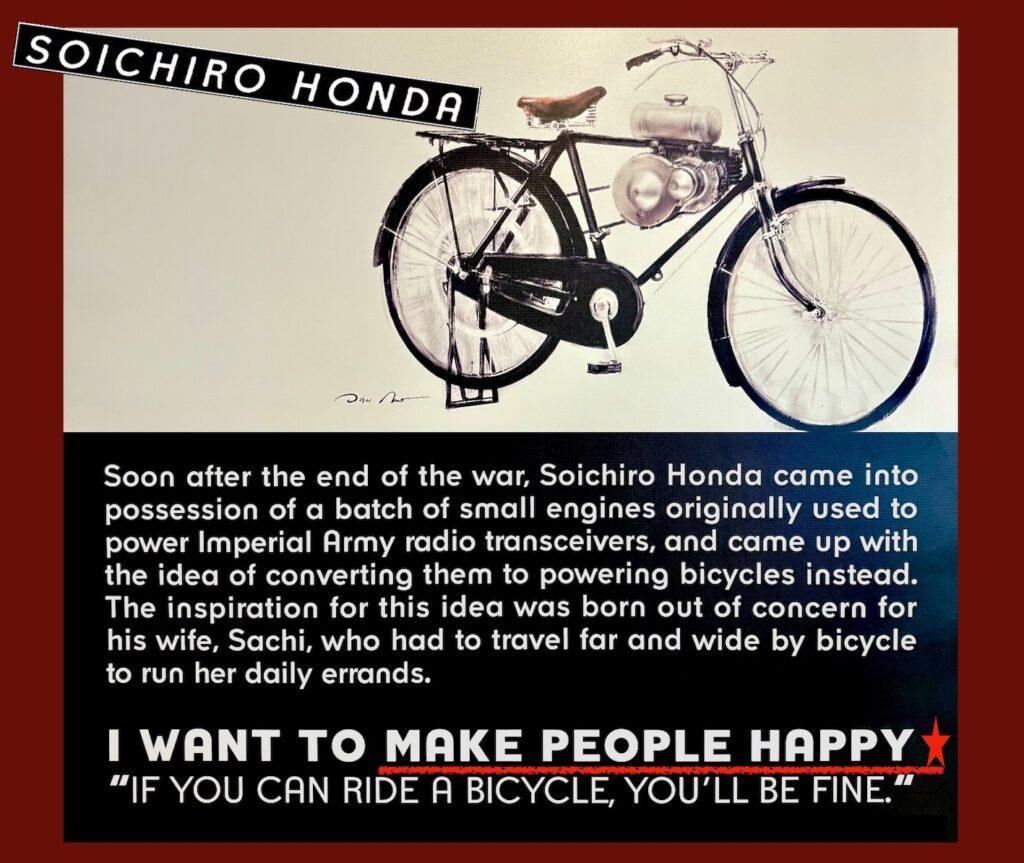
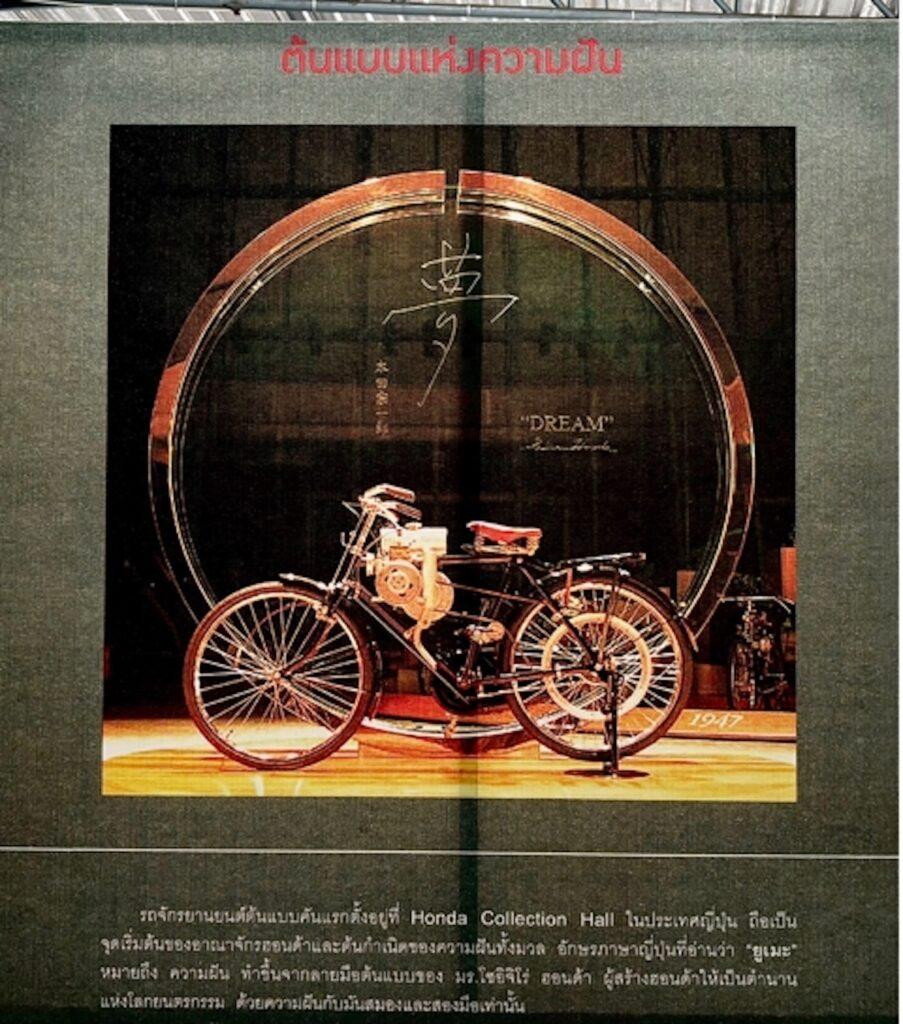
The birth of the “Red Cub” F-Type bicycle engine in 1952 marked a significant expansion in sales. In postwar Japan, bicycles were the primary means of transportation and delivery for the masses.
The 1950 classic film *Bicycle Thieves* by director Vittorio De Sica portrays how bicycles were an essential tool for survival and work-related mobility in postwar Italy. Soichiro Honda likely found inspiration and conviction in watching this film.
The motorized bicycle, affordable and accessible to ordinary people, carried not only goods on its rear rack but also the promise of life and peace, propelling the era forward.
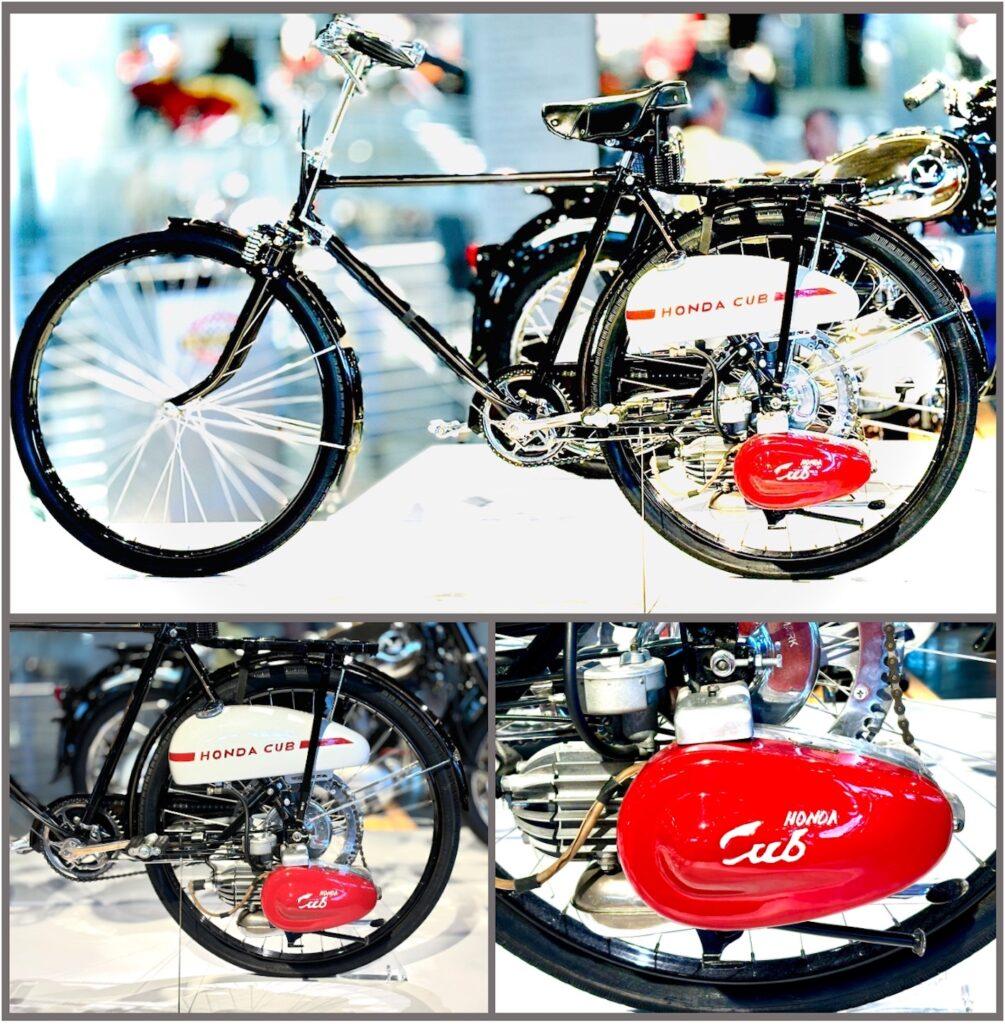
“Benly,” resembling the pronunciation of the Japanese word *便利* meaning “convenience,” & “Dream,” symbolizing Soichiro’s “Dream.”

To talk about the Super Cub is to go beyond its styling and discuss the design of its functionality as a means of transportation. Two-wheelers can be broadly categorized into two genres: those with a high degree of personal preference and those focused on practicality.
Practicality requires attributes such as reliability, ease of use, and a close relationship between the vehicle and the human user, all aligned with everyday life and societal needs. The true essence of the Super Cub lies in its masterful design for mass production, which seamlessly fulfills the functional and rational demands placed on a practical transportation tool. This is what defines its design.
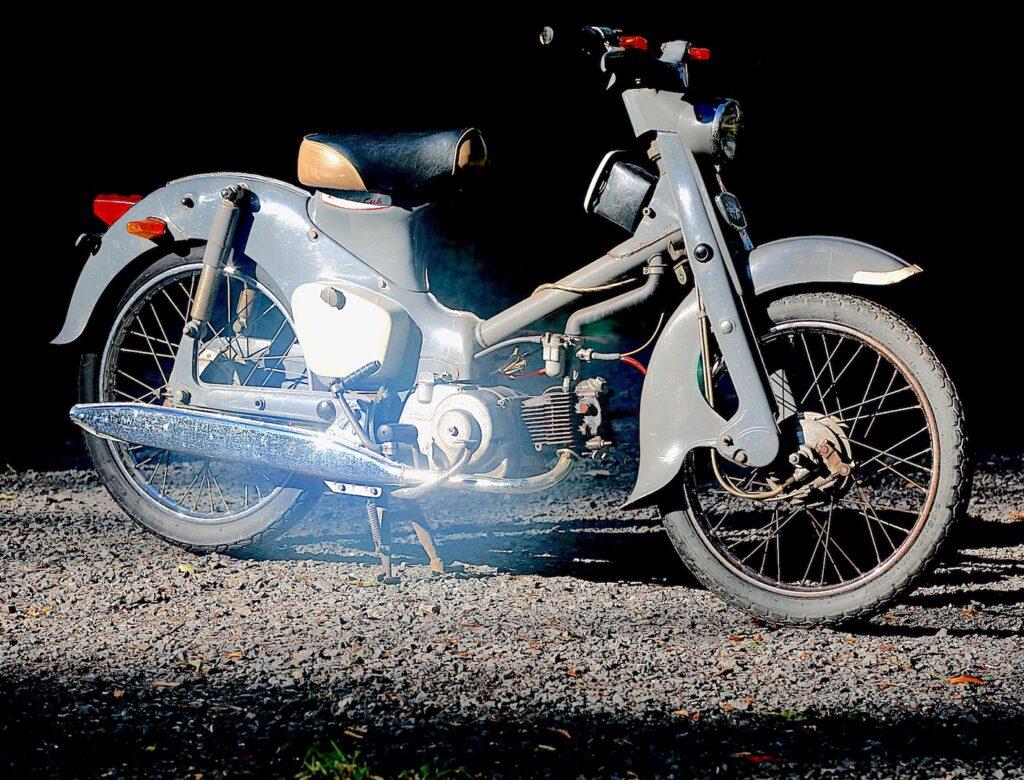
The Creation of Origins
The design of the Super Cub was born out of functionality and rationality. Its forward-tilted engine was positioned low, prioritizing ease of mounting and dismounting. The central section and rear fender were seamlessly integrated through press molding and connected to the front half via a pipe. The use of a polypropylene resin leg shield, cutting-edge at the time, neatly concealed the mechanical components, providing a clean appearance while serving as a color accent to balance the overall design.
This clever layout resulted in an understated yet well-balanced and purposeful form that instantly established the iconic image of the Super Cub. Since its inception, the Super Cub’s superior fundamental structure and its continuous refinement have remained unchanged, forming the core of its enduring design philosophy.
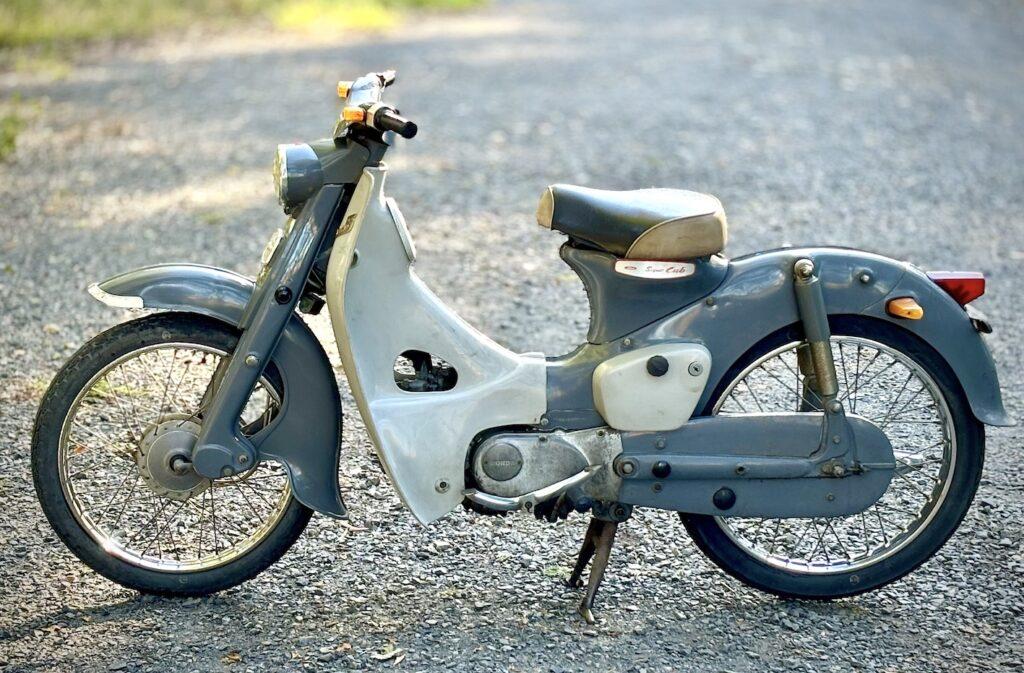
Beautiful Design and Desirable Design.
A beautiful design, simply put, evokes an emotional response. On the other hand, a desirable design emphasizes everyday practicality, closely tied to functionality. While some designs encompass both elements, they are often developed with a focus on one or the other. It is not a matter of which is better; rather, tools and vehicles inherently possess these qualities to varying degrees.
For example, the Vespa is emotional and evokes a sense of fashion and beauty. In contrast, the Cub, with its high level of practicality, fosters attachment and sentimentality over time through continued use. The Vespa, like many fashion items, is inherently charming in its presence. Meanwhile, the Cub, with its reliability and operability as a means of mobility, gradually inspires affection and emotional connection—embodying the concept of “beauty in utility.”
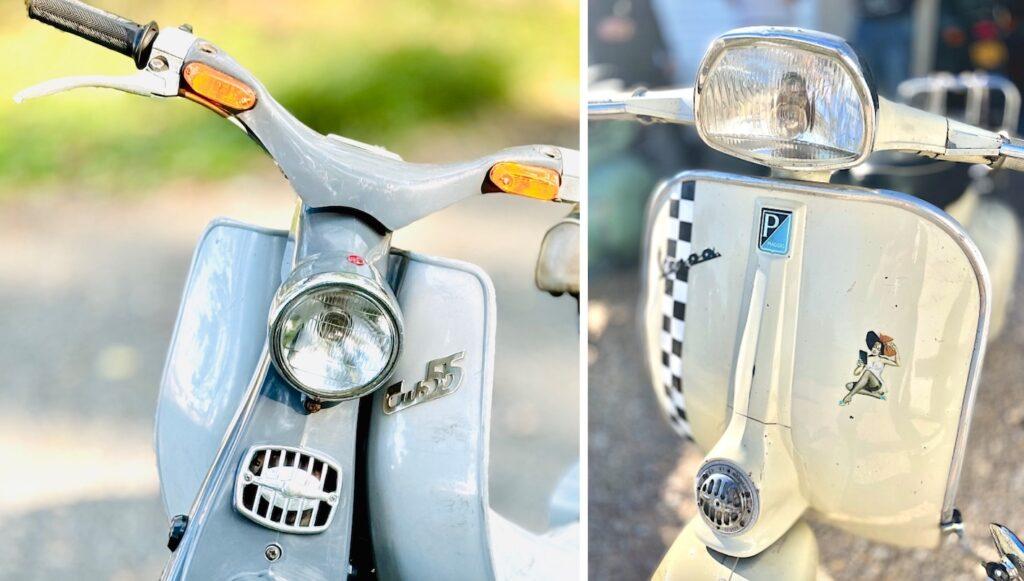
The American big bike brand Indian also ventured into making mopeds.
However, when compared, it becomes clear just how extraordinary the Cub truly is.
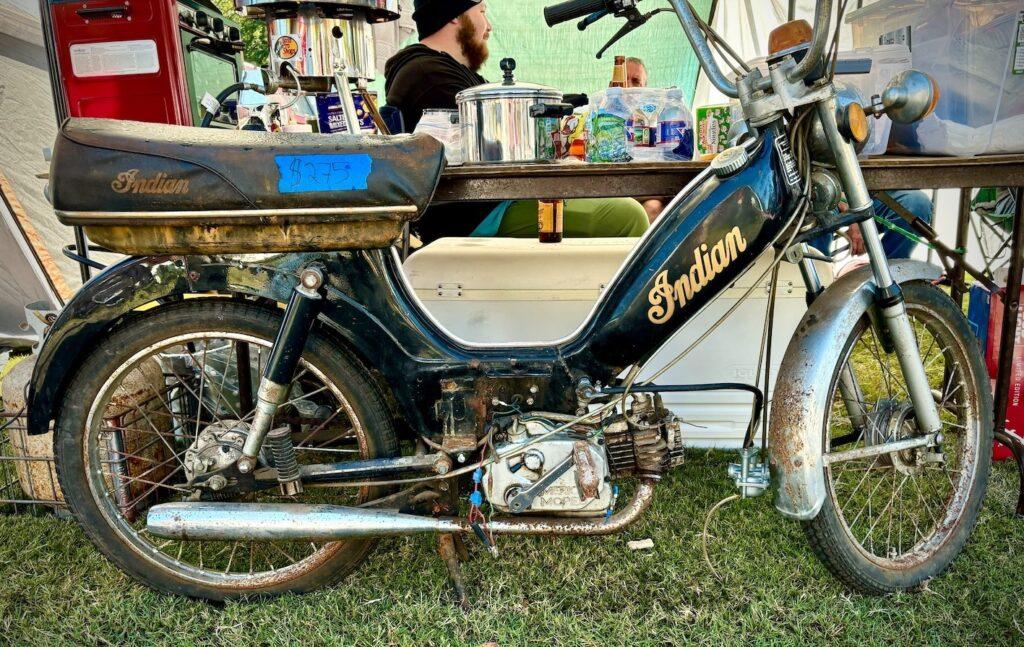
The first-generation Cub was remarkably slim and compact. Its lightweight design was a testament to the skill of its engineers, adhering to the fundamental principles of vehicle design. This focus on reducing weight contributed significantly to its performance, fuel efficiency, and maneuverability.
The cleverly designed Hunter Cub, with its rugged outdoor image, also captured the hearts of Americans. It gave rise to a culture where families would enjoy outdoor activities on two wheels during weekends. This cultural shift eventually sparked a massive off-road boom. The Hunter Cub became a staple, often seen mounted on the back of campers, embodying its popularity in outdoor adventures.
The resin covers, designed in a well-balanced two-tone color scheme with the body, added a friendly and approachable charm. This aesthetic resonated with the trends of the time, aligning with the two-tone designs popular in cars of that era. Looking back, this color sense is uniquely characteristic of that historical period. Unlike the modern approach in cars, where basic colors are paired with black resin parts to balance elongated forms, the two-tone design of that time served a different purpose, reflecting the style and societal mood of the era.
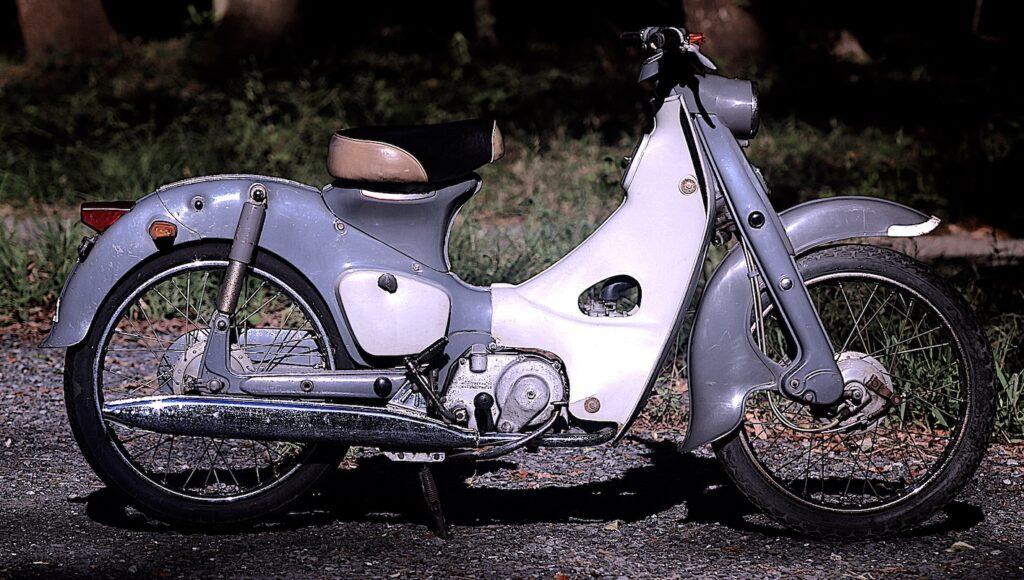
What’s particularly noteworthy is the centerline integrated into the design. From a designer’s perspective, such a line would typically be undesirable. However, this was intentionally added to the resin rear fender and leg shield to maintain consistency with the weld lines created when joining the pressed body and the tank under the seat on either side.
The design theme of an honest and practical vehicle is evident in the way the weld line is incorporated as a single, unifying element throughout the entire design.
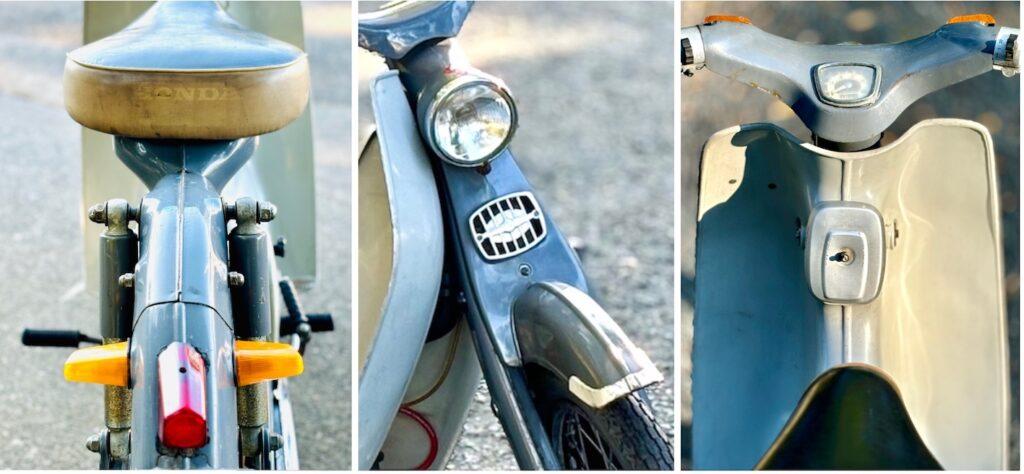
And many young people removed the leg shield, the symbol of a practical vehicle. Once removed, it instantly looked more like a motorcycle, allowing them to feel like bikers and enter the world of motorcycles. This duality was a result of the excellent functional layout.
When the leg shield was removed, it revealed a textbook example of a two-wheeler’s internal combustion engine powered by air and fuel, leaving a strong impression. The charm of two-wheelers lies not only in riding but also in being able to disassemble and maintain them oneself.
Young people learned about the mechanisms by holding a wrench and gaining hands-on experience. These individuals later thrived in various fields, laying the foundation for Japan’s postwar recovery. Indeed, it was like an open-air mechanical school taught by the “Cub Professor” for young students.
Those young people eventually matured, worked passionately, and helped establish vehicles as a core industry.

The 20th century was the age of vehicles, and many young people entrusted their dreams to these machines. Vehicles were extensions of the human body, enabling greater speed and longer distances. This small, forward-leaning, four-stroke single-cylinder engine gently propelled the engines of their hearts forward.
I am one of those who was thrilled by the sensation of gaining wings of freedom the moment I first rode in my high school yard. The instant I started moving, my instincts as a creature balancing on motion came alive, making my blood race.
This photograph shows the second vehicle I owned.
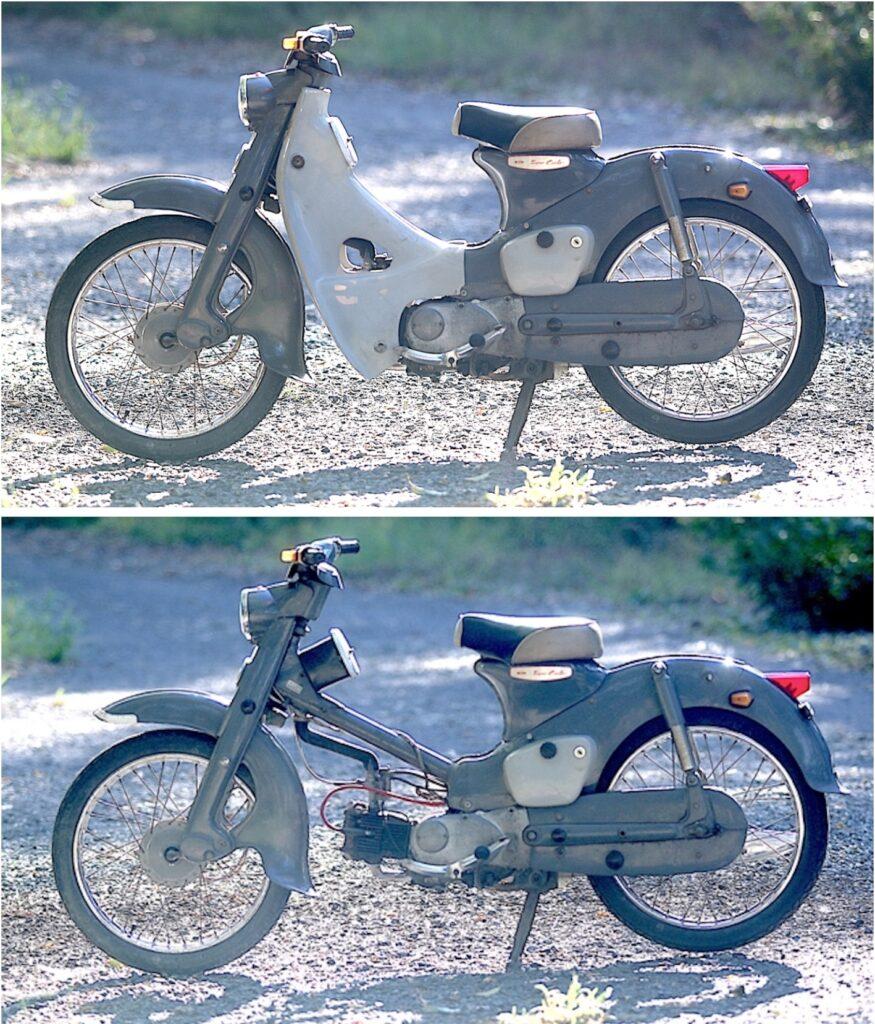
When viewed from above, the design maximizes compactness in the body while offering a contrastingly wide and comfortable seat, reflecting a thoughtful consideration for the rider’s comfort.
By positioning the fuel tank under the seat, the foot area is kept spacious, enhancing the sense of lightness in the body both functionally and visually. The leg shield adds an extra layer of reassurance, creating a feeling of protection for the rider.
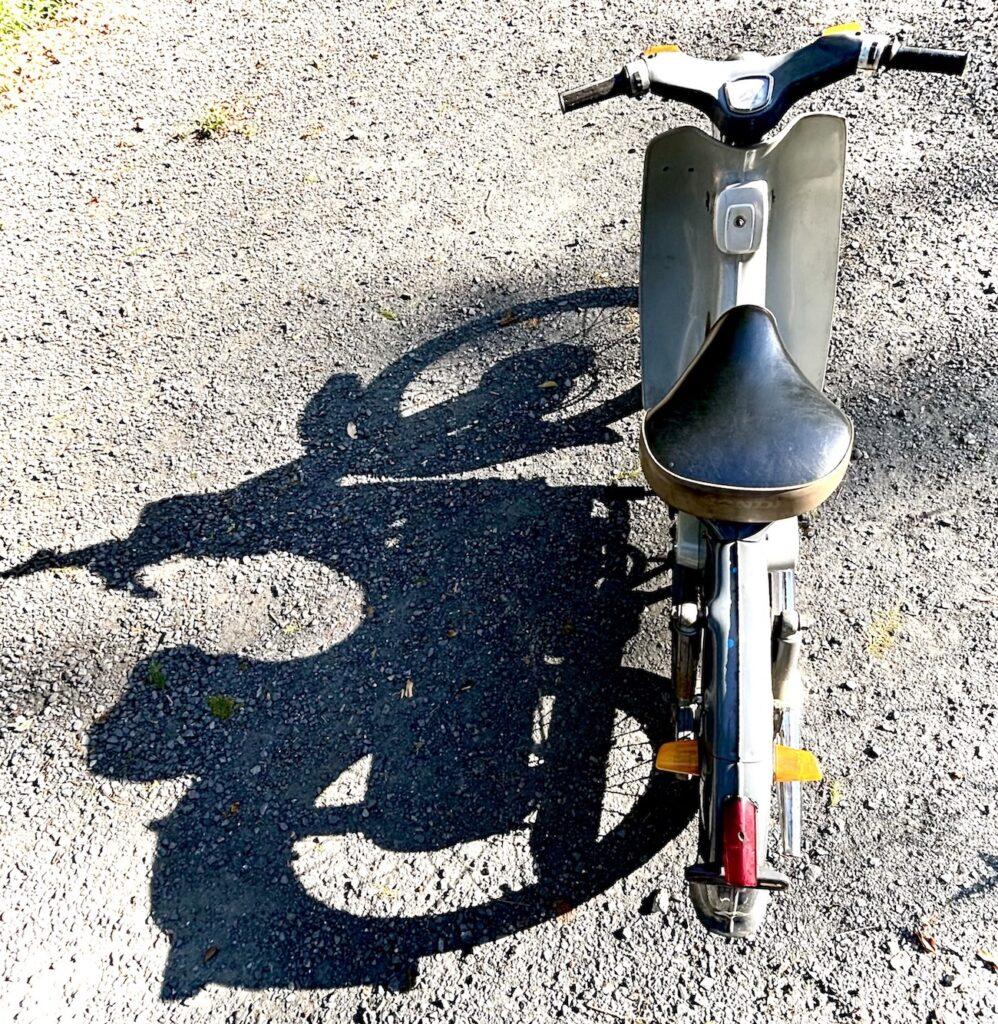
Riding Position
The low, flat handlebars position the rider slightly forward, creating a long space at the rear of the seat. This design accommodates a larger luggage rack and a long seat, making it suitable for carrying three to four passengers, as seen in the usage patterns of Americans and Southeast Asians.
In two-wheelers, the overall structure largely defines the design, and this thoughtful configuration exemplifies the versatility and functionality inherent in the Super Cub’s design.
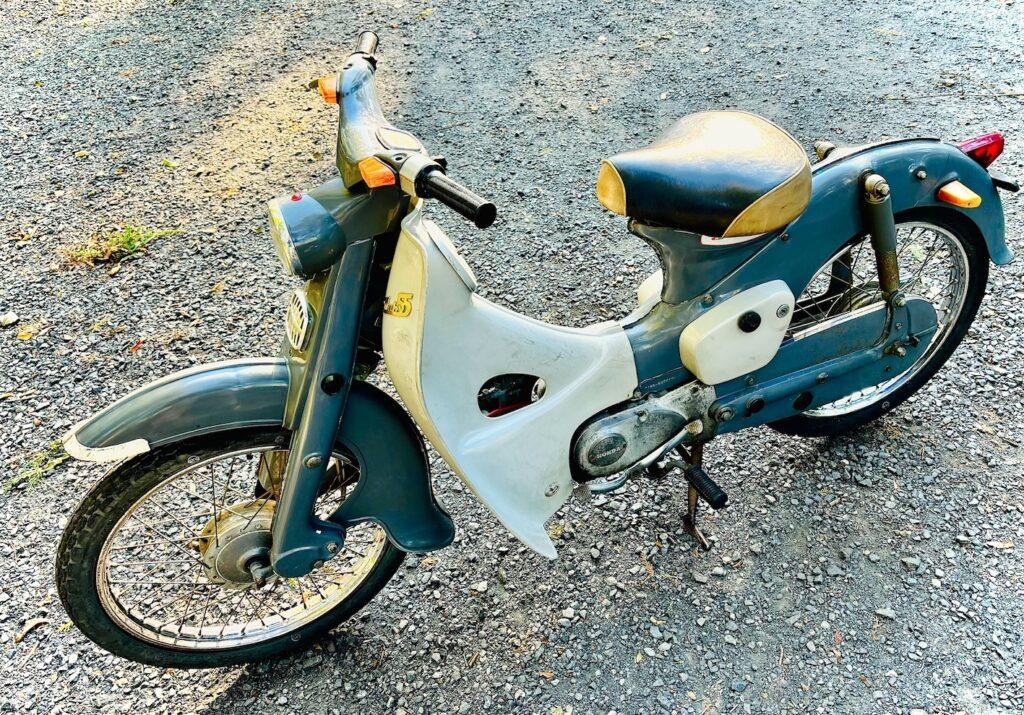
The meter and handlebar cover are designed to eliminate visible mechanical components from the rider’s line of sight, maintaining a consistent approach of creating a user-friendly and human-centered design.
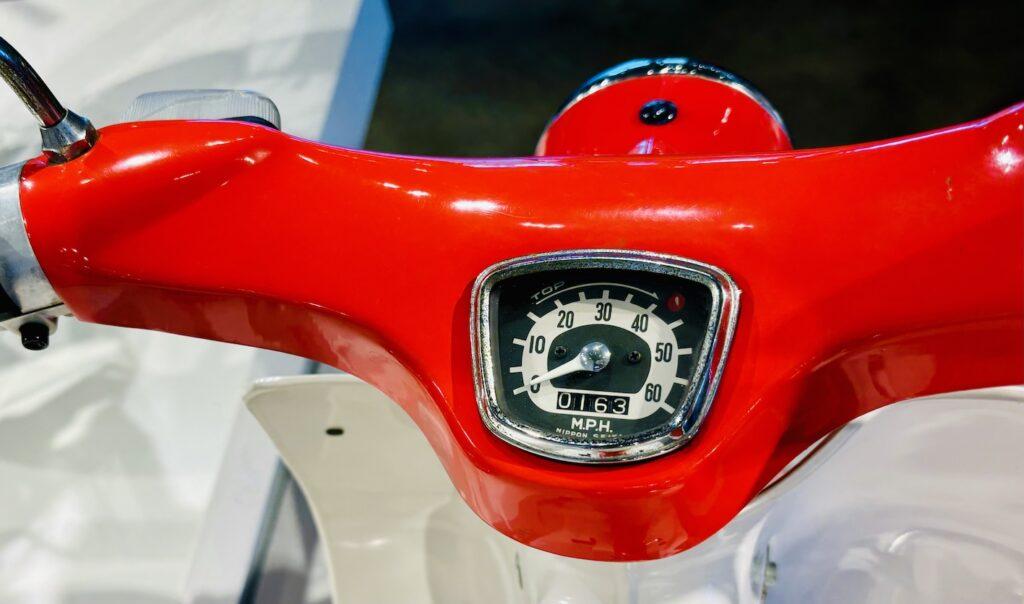
The small headlight symbolizes the compactness of the body and adds a charming touch. The so-called “Seagull-type” handlebar cover is a standout design feature that strongly asserts the identity of the Cub while also enhancing its user-friendliness. Additionally, the placement of the horn serves as a design accent, further contributing to its overall aesthetic.
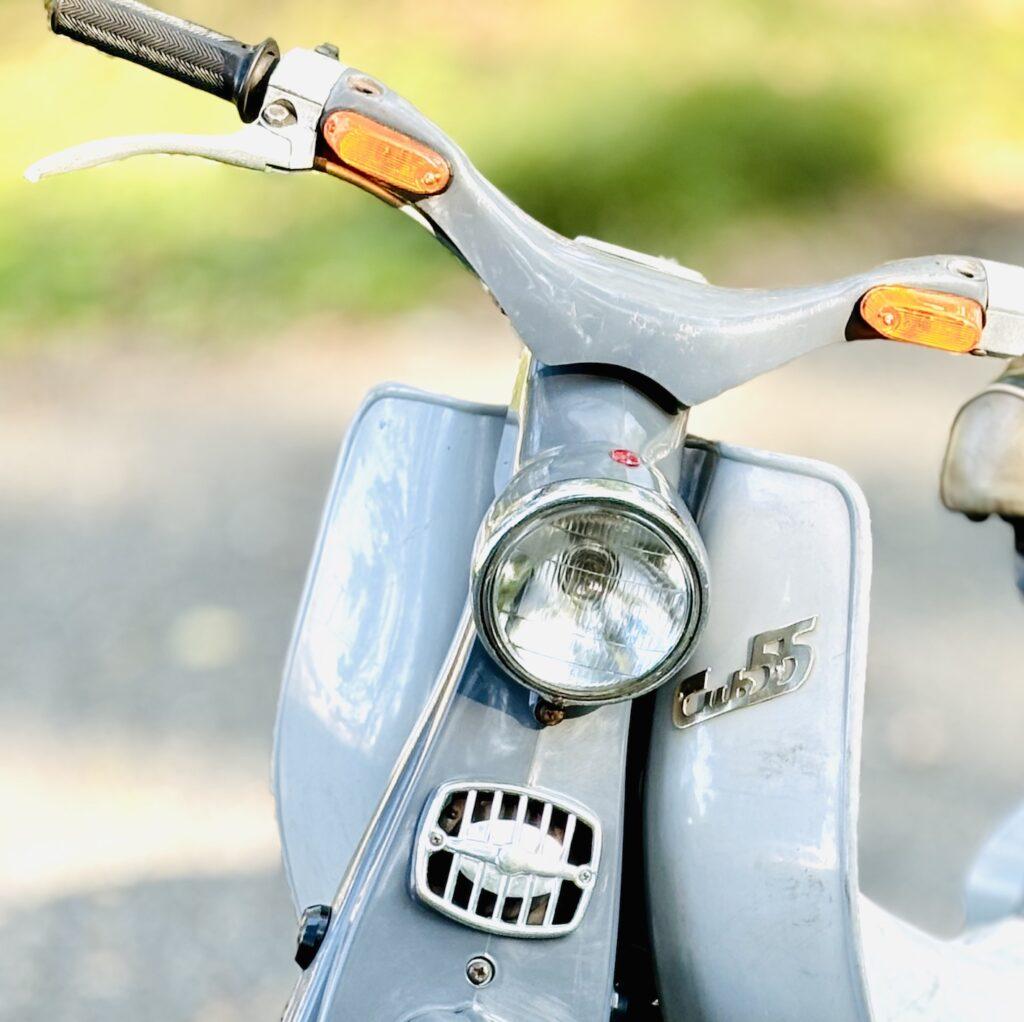
This observation from a private museum in Thailand highlights an interesting detail: the shoulder shape of the leg shield on the left, produced in Thailand, features a more rounded and sloping design. Clearly, the balanced aesthetics suggest the influence of Thai design sensibilities during production, which is a fascinating aspect.
This design change was carried over to subsequent Cub models. The wider lower end of the leg shield likely improved cooling performance. The fact that such modifications were made without hesitation reflects Honda’s commitment to continuous improvement at the time. Additionally, Honda began overseas production of two-wheelers early on, developing tailored models to meet local needs. This meticulous approach to design and production was a key factor in gaining acceptance and popularity among local communities.
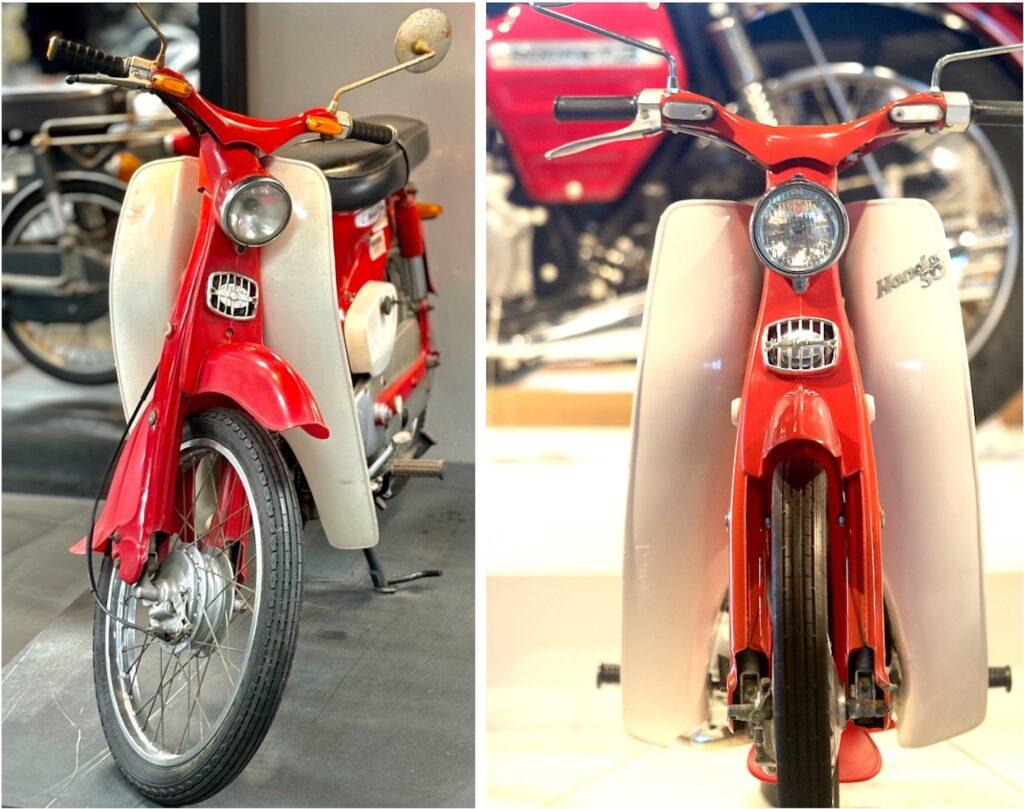
You Meet Nicest People on a Honda
What a stunning poster. This remarkable illustration-based poster beautifully showcased the delightful lifestyle possibilities offered by two-wheelers and marked Honda’s entry into the American market. It depicted a rider stacking their lifestyle onto their bike, creating an image of themselves that turns heads and evokes admiration. The tandem seating and rear carrier suggested an appealing lifestyle, bringing smiles and compelling buyers—a prime example of successful marketing strategy.
At the time, American car catalogs often featured illustrations that opened the door to aspirational lifestyles enabled by automobiles. Similarly, Honda’s poster effectively highlighted the diverse and vibrant possibilities of two-wheelers. The fresh design and colorful palette of the Cub presented a vision of an attainable dream for the everyday individual, showcasing the endless opportunities a small vehicle could offer.
This poster was a masterpiece in conveying the joyful potential of compact vehicles. The striking combination of red and white stood in stark contrast to the dark and somber world of black motorcycles of the era, creating a significant impact. It transformed the two-wheeler’s unfavorable image in North America into the famous slogan, “You Meet the Nicest People on a Honda.”
This marked the beginning of a two-wheel boom that followed. Even prominent stars like Elvis Presley rode Honda motorcycles, further accelerating its popularity. This is how Honda evolved—from *本田* in Japan to *HONDA* in the global spotlight.

A poster like this would knock both me and my girlfriend out, wouldn’t it?
Lifestyle Possibilities Created by the Rear Carrier
The illustration ad featuring Santa Claus reflects the fact that the Super Cub was often purchased as a Christmas gift for children. In Japan, it’s hard to understand why pickup trucks are so popular in America, but their widespread use stems from their versatility and the lifestyle they represent. Pickup trucks are not only practical for transporting goods but also visually symbolize an active culture that embraces various activities.
Similarly, the small Super Cub captured the American imagination by offering not only two-person riding capability but also the versatility to load dreams and possibilities onto its rear carrier. This adaptability resonated deeply with American culture, making it a symbol of active and functional lifestyles.

In North America, the Super Cub transformed the motorcycle’s image from that of an outlaw vehicle to one that was approachable and suitable for everyone, paving the way for the motorcycle boom that followed. Additionally, it played a crucial role in shifting the perception of “cheap and poor-quality” Made in Japan products to one of high trust and reliability, thanks to Japanese motorcycles like the Cub.
The Cub’s universal ease of use also made it an indispensable mode of transportation in developing countries, providing countless people with a reliable means of mobility. Its continued success, with over 100 million units sold worldwide, is a testament to its remarkable impact.
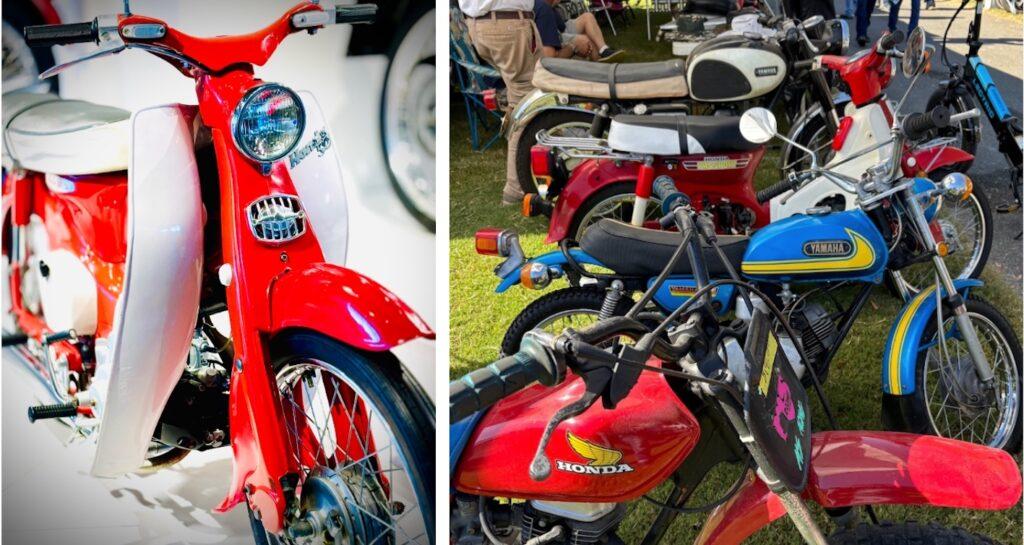
Versatility in Expansion: From Commuting to Outdoors, Off-Roading, and Leisure
The 17-inch tires developed specifically for the Cub, aimed at providing mobility unaffected by road conditions, gave rise to various derivative models. One such model, the outdoor-oriented Hunter Cub, born from clever design, captured the hearts of Americans. It sparked a cultural shift, with families enjoying outdoor activities on two wheels during weekends, which later led to the massive off-road boom. The Hunter Cub also became a staple, often seen mounted on the back of RVs.
This versatility and adaptability, unmatched by scooters like the Vespa, was a significant advantage brought about by the fundamental structure of the Cub. It demonstrated a unique capacity for multi-purpose use and diverse expansions, making it a symbol of functionality and innovation.
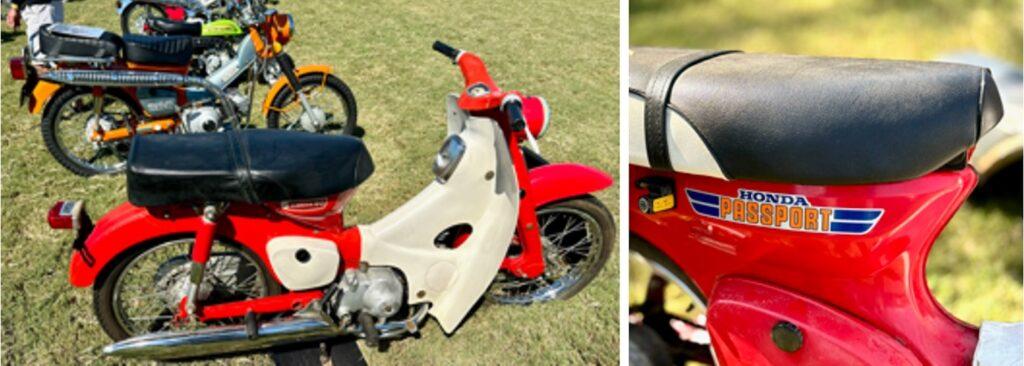
This excellent forward-tilted engine became a gateway to two-wheelers, expanding from sports models to leisure models across the United States and spreading the greatness of “Made in Japan” throughout the nation.
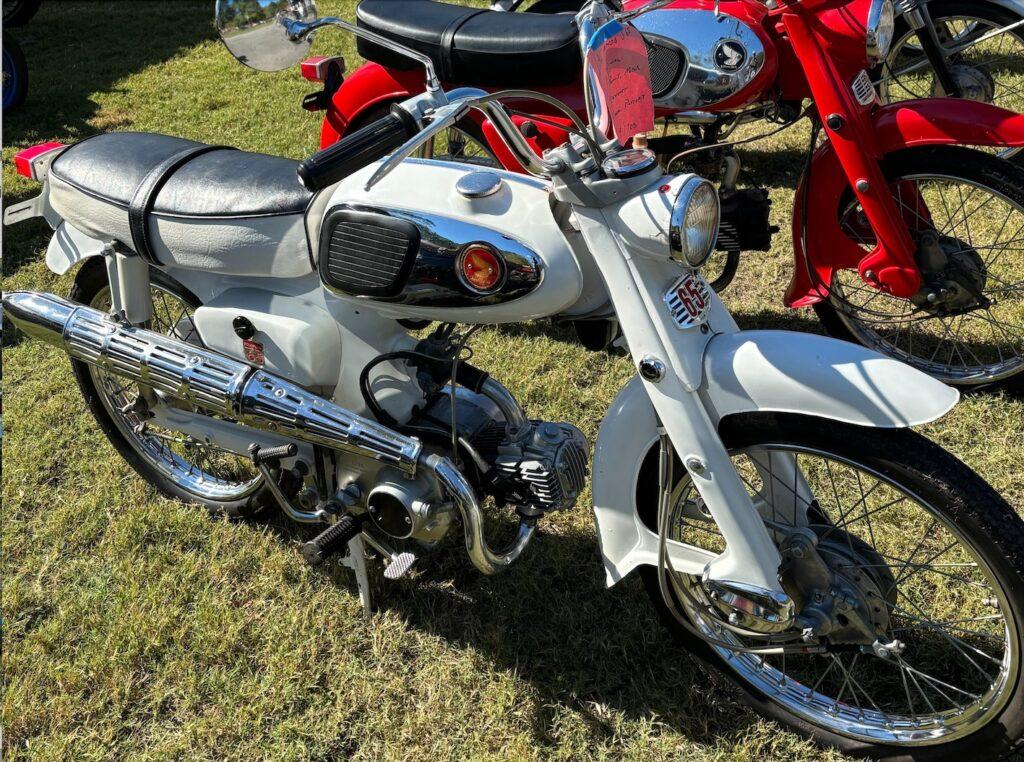
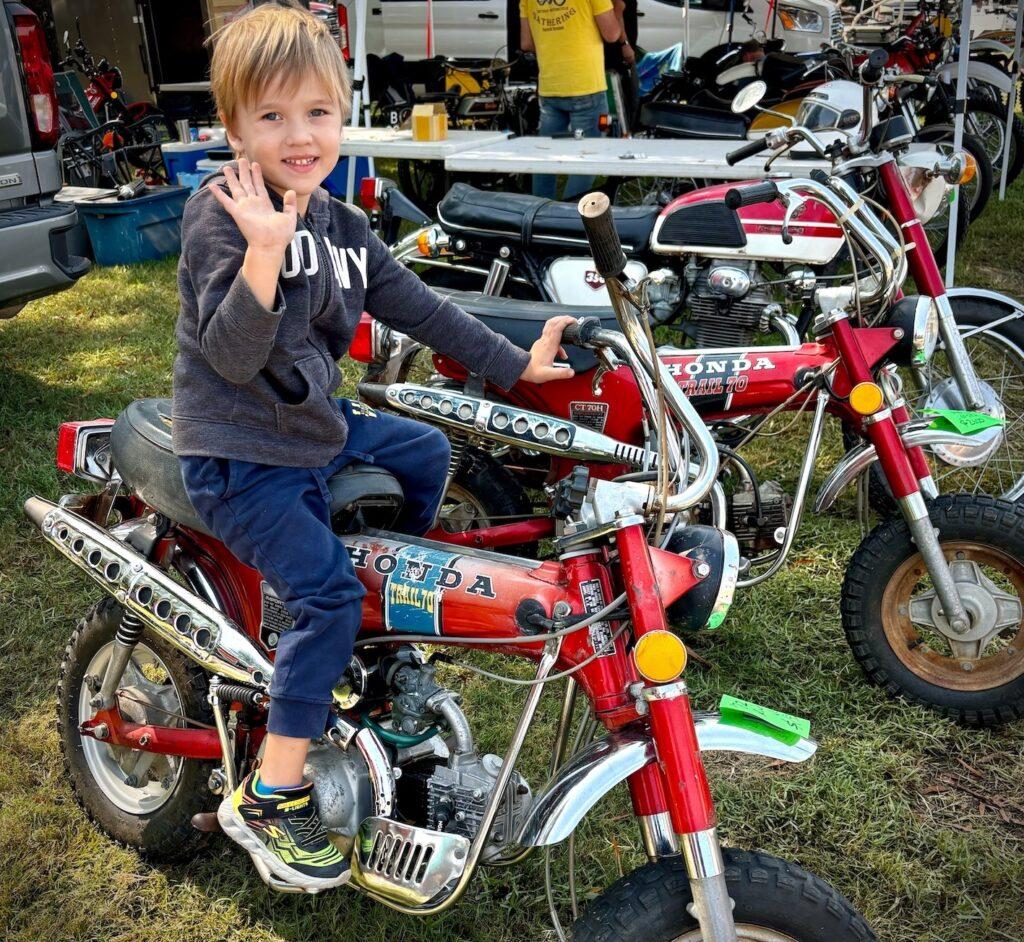
Color Scheme
The understated two-tone color scheme seamlessly blends into the seasonal landscapes across Japan, while in North America, the striking red and white two-tone boldly expresses the ambition of global expansion. Later, Soichiro Honda, inspired by the design philosophies of Japanese shrines and temples, seemed to advocate for Japan-originated design, choosing red and white—symbols of Japan—as key colors for overseas strategy.
As seen with examples like Sony and Mac, the understanding and support of design by top management play a crucial role in achieving success. Honda’s thoughtful use of color underscores the importance of aligning design with cultural identity and business strategy.
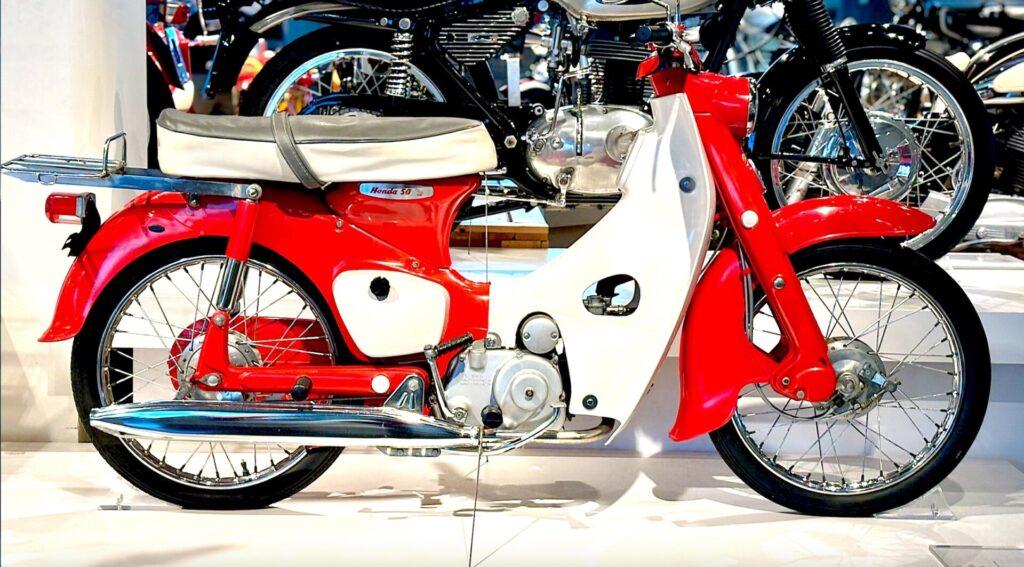
The Cub is rarely described as particularly beautiful, but it is often called cute, and despite being a two-wheeler, it is not considered dangerous—making it a truly unique presence. Even those who dislike motorcycles rarely dislike the Cub, and this is precisely what defines the essence of the Cub.
Since its birth, the Cub has been a constant presence in daily life, from morning to night, rain or snow, delivering newspapers, mail, milk, money, or meals. It has connected Japan like arteries and veins, earning the gratitude of the entire nation.
For 72 years since its creation, this small yet remarkable transportation marvel has supported the flow of information, goods, and people across Japan, truly becoming a beloved cornerstone of the country’s infrastructure.
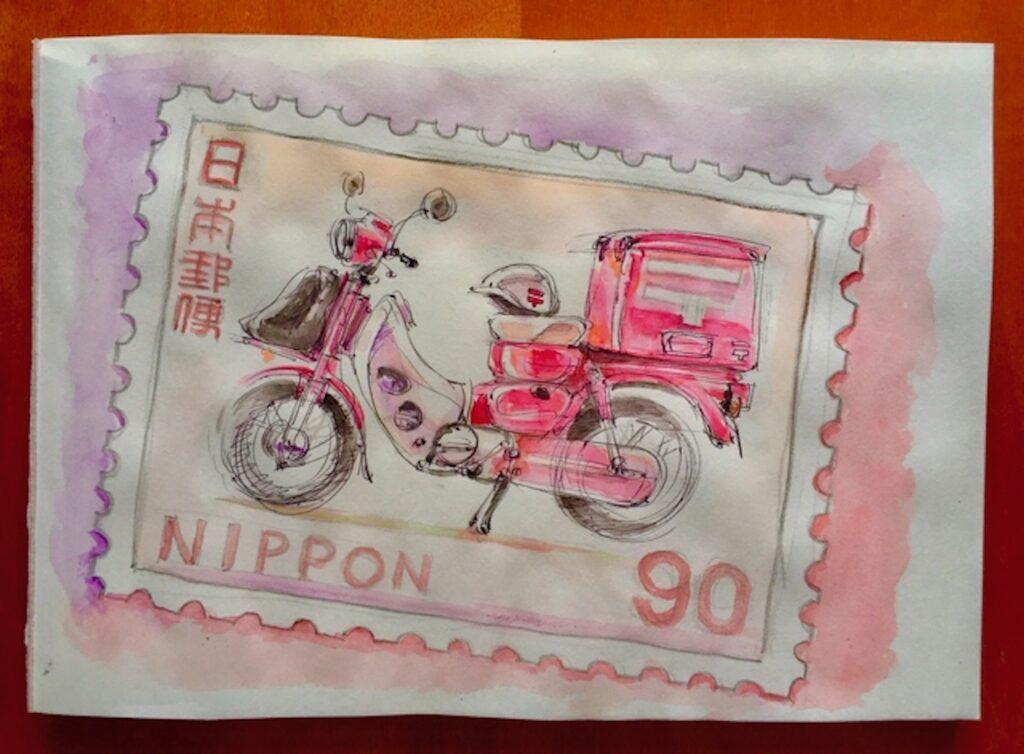
LHM Motorcycle Museum
The LHM Motorcycle Museum, a rare and exceptional private museum in Thailand dedicated to showcasing all Japanese motorcycles sold in the country, also features an exhibit on the evolution and history of the Cub.

This is the evolution of local moped design starting from the Cub. While the excellent fundamental structure remains unchanged, design changes can be seen to adapt to the times and user needs. Additionally, as a major design element, there is graphic design that is not found in four-wheelers. Especially in ASEAN countries, each country is sensitive to cultural and environmental differences as well as trends, resulting in different colors and graphics for each country. This is made possible by production in each country. It is a meticulous design response unique to two-wheelers, rooted in the lifestyle, culture, and preferences of the people in those countries, something not found in four-wheelers.

Even in the new models, the iconic features of the Super Cub are preserved, while evolving to make mounting and dismounting even easier. This reflects Honda’s deep respect for the original model and their unwavering commitment to the comfort and convenience of the riders.
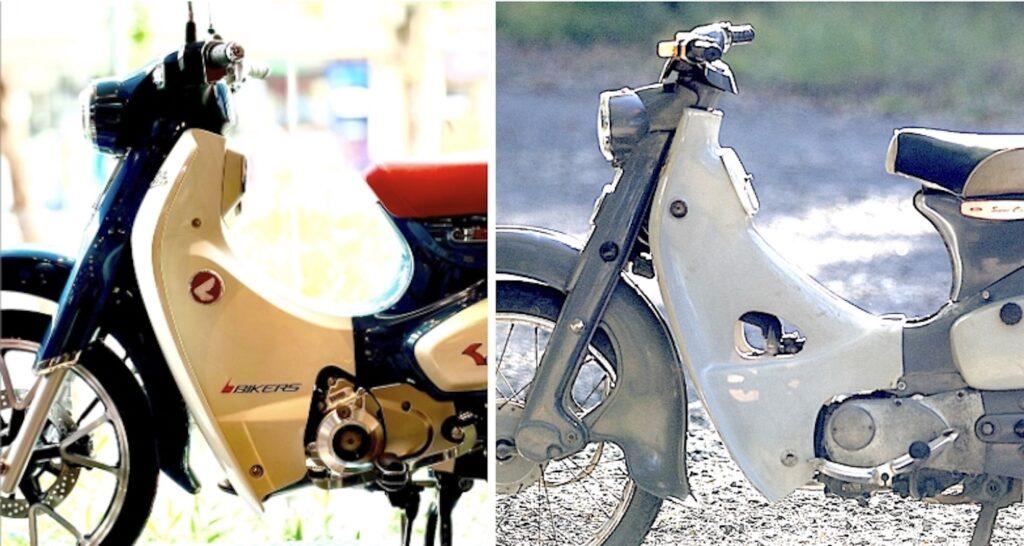
The Cub has continuously evolved, and its descendants remain beloved by the masses, thriving in many countries to this day.
With four-wheel vehicles becoming larger, the absence of two-wheelers would make traffic congestion an even more severe social issue.

With its massive success in Japan, the Hunter Cub became the two-wheeled pickup truck equivalent in the U.S., celebrated for its versatility. In Thailand, it aligns with the new retro trend. The direct descendant, the Super Cub, will continue to bring the joy and pleasure of mobility to people around the world.
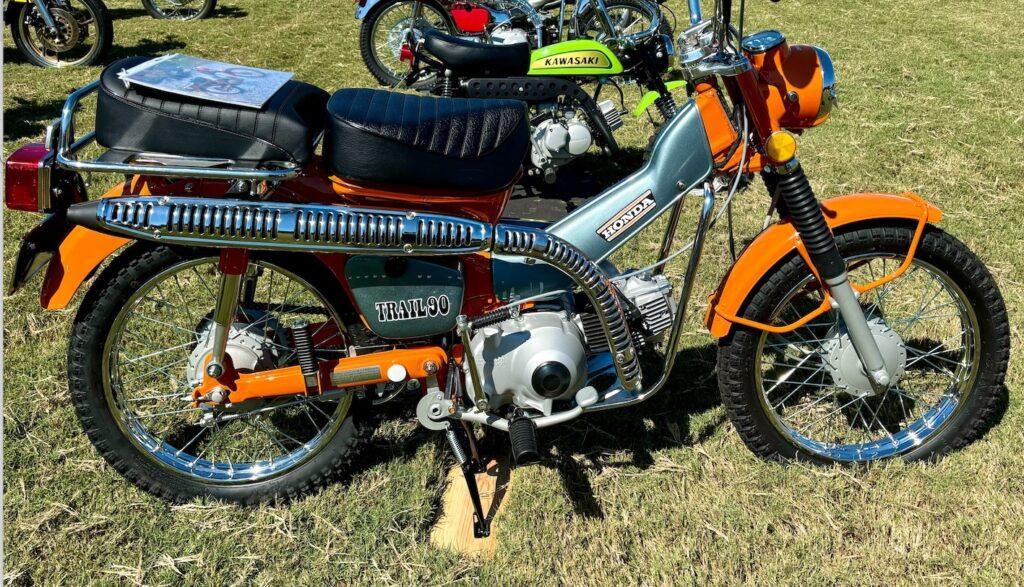

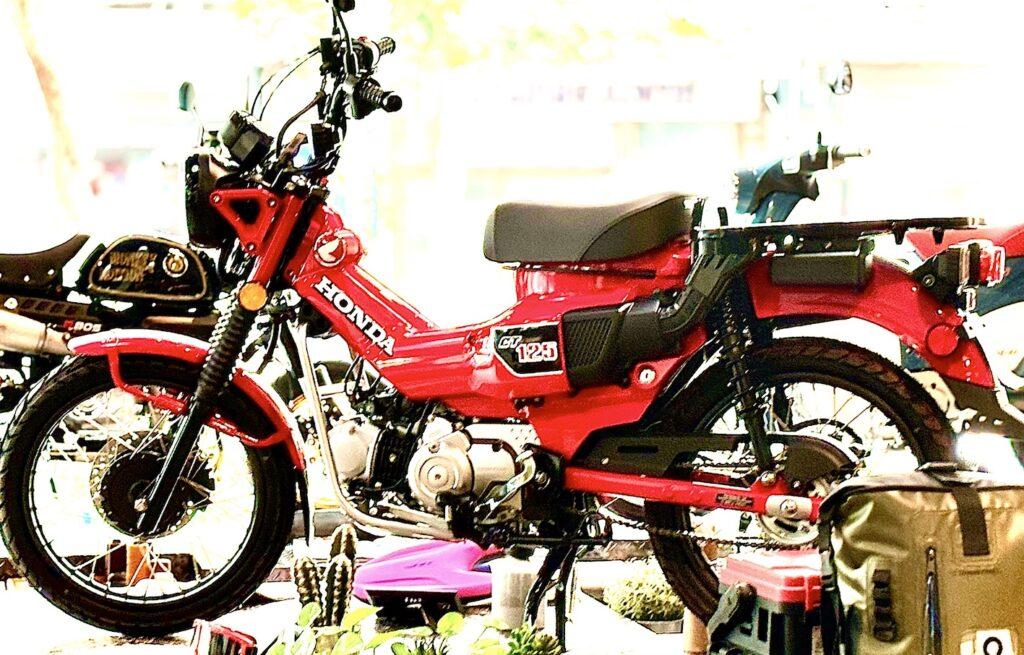
The Great Japanese-Born World Standard
Born in Japan, the Cub has become a trusted mobility partner across the globe. Its legendary reliability—so dependable it’s said to run even without oil—has been built through constant improvement and continues to be a hallmark of modern Cubs.
This small yet monumental vehicle will undoubtedly remain beloved worldwide for years to come. Thanks, Cub!
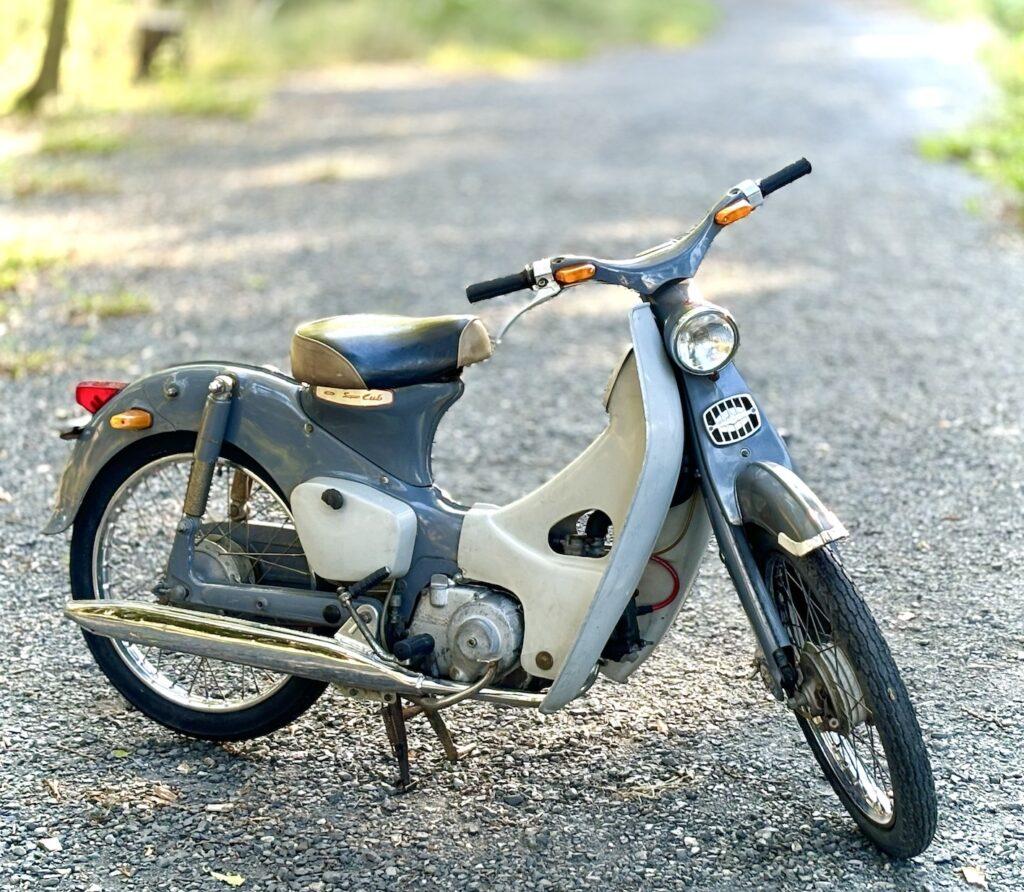

![by Car Styling [カースタイリング]](https://motor-fan.jp/wp-content/uploads/2025/04/carstyling-jp_logo.png)






